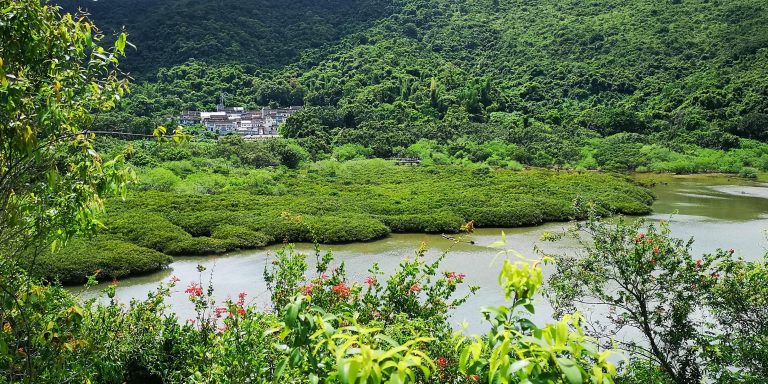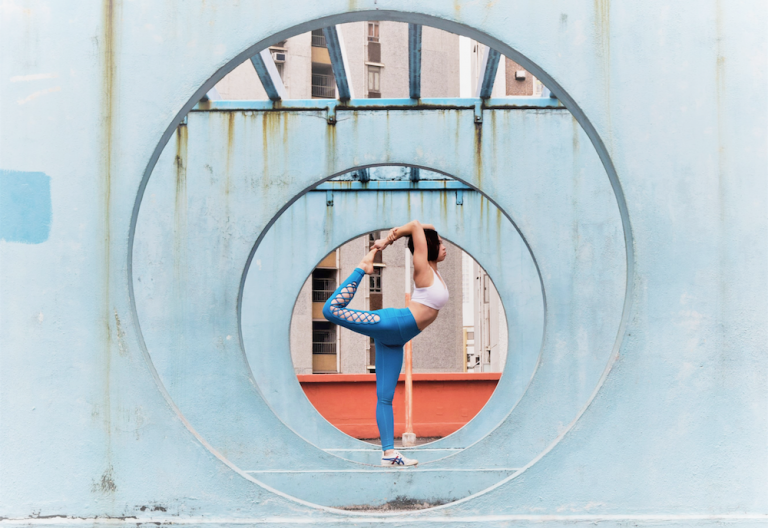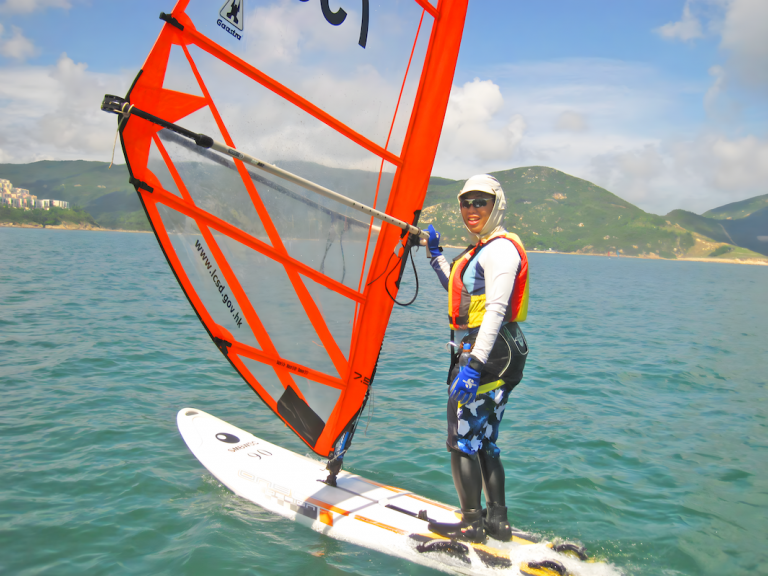When the social unrest that gripped Hong Kong last year led to the iconic Oxfam Trailwalker to be cancelled over safety concerns for the thousands of runners taking part, few would have believed the event would again be disrupted in 2020 – this time for an entirely different, yet arguably far bigger, reason. But that is exactly what happened.
The 100-kilometre race, which was founded in 1981 as a training exercise for the Queen’s Gurkha Signals, when Hong Kong was still a British colony, and later opened to the public as a charity fundraiser, was due to take place in the gloriously autumnal month of November. But along came an unprecedented global pandemic, and the race found itself postponed to the frostier dates of 29-31 January 2021.
Team 0066 in training.
For one group of Hong Kong Institute of CPAs members taking part in the event, that delay has only given them longer to train, more time to finesse their team work, and a bigger build up of excitement. Luke Ma, Jeremy Chiu, Francis Yuen and Pearl Chau are the members of team number 0066, and will be one of the 1,000 teams of four runners who will take part in the gruelling event, which is as much a test of the mind as of the body.
Within 48 hours, the quartet will aim to complete the MacLehose Trail, which is named after Sir Murray MacLehose, the longest-serving governor of Hong Kong, and a keen hiker himself who founded the city’s protected and much used country parks. It begins in Pak Tam Chung, in Sai Kung Country Park, in the east of the territory, and ends at Tai Tong Holiday Camp, in Tai Lam Country Park, Yuen Long, in the far west, having snaked across mountains, old wartime pathways and reservoirs in the New Territories.
Ma, Partner at a Big Four firm and leader of the team, was meant to be on the team last year, and has been on the sidelines before, having helped out in previous events at supply stations handing out refreshments to the Institute’s Trailwalker teams since 2011. But that’s not to say he is a novice – he has run 16 marathons already, all in the past six years, in locations including London, Chicago, New York, Tokyo and, of course, Hong Kong.
Luke Ma, Partner at a Big Four firm, is the team leader.
This event should be easy for Ma but he says there are key differences. “A marathon takes several hours, definitely not more than six or seven hours,” he says, adding that the challenge is solo. “The easiest way to complete a marathon is to listen to your body, keep yourself hydrated and to keep running. It is rather straightforward.”
“You need to look after your teammates and support each other to make sure everyone finishes the race altogether without leaving anyone behind.”
Trailwalker, however, is a team sport, and will involve syncing his own timing and fitness with that of his teammates. “You need to look after your teammates and support each other to make sure everyone finishes the race altogether without leaving anyone behind,” he says. Luckily, Ma is in good hands with his teammates, who have all taken part in the Trailwalker on multiple occasions before.
Jeremy Chiu, retired, has taken part in the Oxfam Trailwalker for the past decade.
Pit stop ready
Chiu is one of the most experienced members on the team, having taken part in the Trailwalker for the past 10 years. After he retired at the age of 60, he continued to participate in the event, saying it keeps him healthy. His two young sons are also involved in the sport of trail walking, and he says his wife would like to be, but a health condition holds her back.
Chiu says that the key to success in the event is training and preparation. Along the route are supply stations where the team will have friends and family on hand to give them supplies, such as snacks, water and a chair to rest on. That allows him to travel light. The event typically takes more than 24 hours, and to get through the trickier night sections requires full concentration and sometimes a 30-minute power nap at the rest stop. “But if there’s no one there to support you, then you have to carry more,” he says, stressing that getting these pit stops organized is imperative.
Experience has taught Chiu that Tai Mo Shan is the most gruelling part of the walk, and the section he will train hardest for. At 957 metres above sea level, the mountain is Hong Kong’s highest peak, affording amazing views of the city on a clear day – and in January is likely to be chilly. It comes towards the end of the race. “This is very tough,” he says. But once walkers are over the peak, they know they are on the home run, and that, says Chiu, is a wonderful feeling.
Francis Yuen is the Chief Financial Officer of the Hong Kong branch of a Taiwanese bank.
The great outdoors
Their third team member Yuen, is the Chief Financial Officer of the Hong Kong branch of a Taiwanese bank. Despite his busy schedule, he, like the others, still finds time to run twice a week, Wednesday and Saturday, and says that exercise provides much needed mental and physical balance to his life. Yuen loves to run by Kai Tak, the old Hong Kong airport, which is now a cruise terminal and is being redeveloped. There is a 12-km trail around this area that serves as his Trailwalker training ground.
Yuen remembers Tai Mo Shan well from the uncharacteristically cold 2016 race, when his raincoat had ice on it as he descended the steep peak in rainy weather. Personally, he is most looking forward to section three of the MacLehose Trail. It is a 10-km stretch and ranked as one of the hardest parts of the trail as it snakes through Sai Kung Country Park. Yuen says the view of Hong Kong looks beautiful in the distance from the hills, especially when training on it at night.
“When you complete the trail with your team, your support team is at the very end and when the last team member has run across the finish line – that is a happy moment. We can feel the atmosphere.”
His second favourite part, of course, is the journey’s end. “When you complete the trail with your team, your support team is at the very end and when the last team member has run across the finish line – that is a happy moment. We can feel the atmosphere,” he smiles.
Yuen is well aware there is a chance this year that the event could be further delayed by the pandemic, but thinks even if it is officially called off there are other ways to put their training to good use. Earlier this year, for example, he participated in a virtual London Marathon when that event was cancelled.
Pearl Chau is Planning & Insights Executive at a trading company.
Keeping pace
Chau met her teammates through the Institute’s Athletics Interest Group. The interest group encourages its members to take part in several group training sessions and then groups members together based on ability level and approach for the race.
Chau, who works as a Planning & Insights Executive at a trading company, says that when she first started taking part in the 100-km Trailwalker, her friends thought she was crazy. But as a keen athlete, she says preparing for the event allows her to keep focused on staying healthy. “It keeps me happy and feeling refreshed too,” she says. She hikes every week, both with her teammates and sometimes alone. That, she says, provides a good work-life balance. “Even though you have long working hours, you still need to prioritize your time for exercise,” she says.
The biggest challenge for her of the race will not only be completing 100 km in under their target of 28 hours, but adjusting to the pace of the other participants. At times, when someone wants to run, others might want to walk or rest. “We have to practise together so that we can get used to the pacing of other teammates,” she says. “It takes a lot of time to work on that.”
“We have to practise together so that we can get used to the pacing of other teammates.”
Chau adds that good teams learn how to help each other with setbacks during a race, such as back aches, as well as leg and foot pains, and spot when a fellow teammate is tired or sleepy to offer help, perhaps by carrying their backpacks or holding their hand during a difficult section.
As the race day edges closer, there is one thing on all of their minds, which none of the more experienced team members have precedent for: the pandemic. Much of their outdoor practice for part of this year had to be done wearing a mask. With the trail heaving with thousands of runners, some are wondering if they need to wear a mask throughout the entire 100-km distance. “That is the million dollar question,” says Ma, adding that wearing a mask could keep him from reaching his goal. “The Trailwalker will consume a lot of energy, and we all want to finish the 100 km with a good time.”
Yuen admits that getting thousands of people together “in a cookie jar” situation at the start line is not the best idea. “So, I still have some hesitation,” he says. Perhaps the best solution is to wear a mask at the beginning, then take it off as the teams naturally separate. Or the organizer might plan to dissipate that cookie jar situation.
For now, all four athletes are just focusing on what is in their control: getting fit for the race and improving their teamwork. “No matter how it works out, we still continue to train to prepare for the future,” says Yuen, with a dedication to trailwalking that Lord MacLehose himself would have surely admired.
The MacLehose Trail, which is named after Sir Murray MacLehose, begins in Pak Tam Chung, in Sai Kung Country Park, in the east of the city, and ends at Tai Tong Holiday Camp, in Tai Lam Country Park, Yuen Long, in the far west.


















